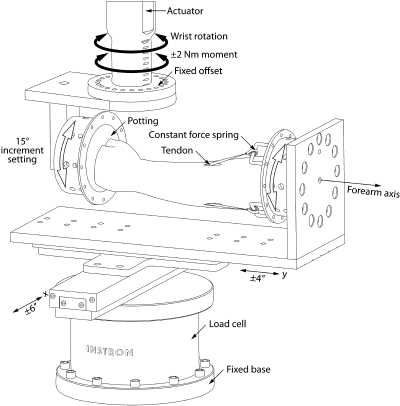Fig. 2.
Moments were applied in twenty-four different directions of wrist motion with use of a specifically designed specimen jig that interfaced to a standard materials testing system. The forearm, pinned in neutral rotation, was mounted to the jig horizontally. Moments of ±2.0 Nm were applied sinusoidally in each direction of wrist motion. The application of moments in twenty-four different directions of wrist motion was achieved by rotating the specimen about the forearm axis and then locking the potting fixtures to the jig in 15° increments. Two orthogonal linear slides (x and y) permitted the specimen to travel freely in the horizontal plane, providing an unconstrained application of the moments and allowing the wrist to rotate about its physiological axes. Four constant force springs (each 4.45 N) attached the flexors and extensors to the potting fixture.

